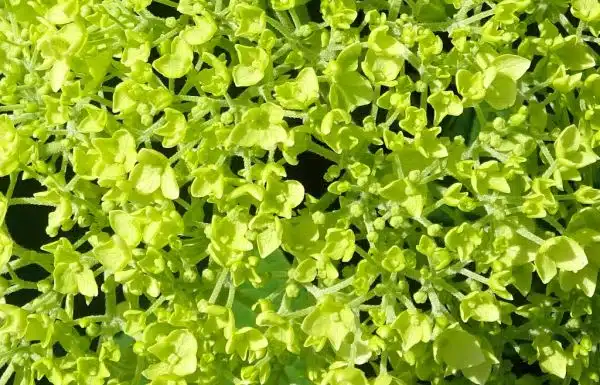Hydrangeas are one of the most popular flowering shrubs found in gardens all over the world. Their large, showy blooms and lush foliage make them a favorite among gardeners of all levels. However, to maintain their vibrant colors and healthy growth, hydrangeas require proper fertilization at the right time.
Fertilizing hydrangeas can be a delicate process that requires a good understanding of the plant’s growth habits and nutrient requirements. In this article, we will explore when and how to fertilize hydrangeas to ensure optimal growth and health. Whether you’re a seasoned gardener or just starting out, this guide will provide valuable insights into caring for your hydrangeas and helping them thrive for years to come.
Understanding Hydrangea Nutrition
Hydrangeas are beautiful flowering shrubs that require proper care and nutrition to thrive. A common issue that hydrangea owners face is nutrient deficiencies, which can result in stunted growth and lack of blooms. The three primary nutrients that hydrangeas need are nitrogen (N), phosphorus (P), and potassium (K).
However, it’s important to note that these nutrients must be provided in the correct balance for optimal growth. Hydrangea nutrient deficiencies can occur when there’s an excess of one nutrient over another or when nutrients are lacking altogether. For example, too much nitrogen can cause the plant to produce more foliage than flowers, resulting in a less vibrant display. On the other hand, a lack of phosphorus can lead to poor root development and weak stems.
Another crucial factor in hydrangea nutrition is soil pH. Hydrangeas prefer slightly acidic soil with a pH between 5.2-6.2 for optimal nutrient uptake. When the soil pH is too high or too low, certain nutrients become unavailable to the plant, leading to deficiencies. Additionally, soil acidity affects flower color in some hydrangea varieties such as blue or pink flowers, which can change based on soil pH levels.
Moving forward towards ensuring proper nourishment for your hydrangeas requires understanding the role of various fertilizers types and their effects on plants’ growth and development while providing necessary nutrients.
Types Of Fertilizers For Hydrangeas
Organic fertilizers are a type of fertilizer often used on hydangeas, as they provide a slow and steady release of essential nutrients over a longer period of time. Synthetic fertilizers, or chemical fertilizers, are also effective in providing nutrients to hydrangeas, but may require more frequent applications. Slow-release fertilizers provide the most long-lasting benefit for hydrangeas, as the nutrients are released over a longer period of time and don’t require as frequent applications. It is important to note that the type of fertilizer used is dependent upon the specific growing conditions of the hydrangea, as well as the existing soil nutrient levels. Generally, organic fertilizers are recommended for use on hydrangeas, as they tend to be more environmentally friendly and provide a steady release of nutrients. However, synthetic or slow-release fertilizers may be necessary in certain conditions to provide the necessary nutrients to the soil.
Organic Fertilizers
Organic fertilizers, when used properly, can provide the necessary nutrients for hydrangeas to thrive. Composting benefits all plants by producing a nutrient-rich soil amendment that hydrangeas can use to grow and flower. Using homemade fertilizer recipes is a great way to ensure that the fertilizers applied are free of harmful chemicals and are environmentally friendly.
Composting involves breaking down organic materials such as leaves, grass clippings, and food scraps into a nutrient-rich soil amendment. This process helps improve soil structure while reducing the need for chemical fertilizers which can harm the environment. Adding compost to hydrangea beds before planting will help create an ideal growing environment that promotes healthy roots and foliage.
Homemade fertilizer recipes offer gardeners a cost-effective alternative to commercial fertilizers while ensuring that the ingredients used are safe for the environment. One example of a homemade fertilizer recipe is mixing one part coffee grounds with four parts water and allowing it to steep for 24 hours. The resulting mixture can be added around the base of hydrangeas once per month during their growing season. Other options include using eggshells, banana peels, or fish emulsion mixed with water.
In conclusion, using organic fertilizers such as compost and homemade fertilizer recipes provides numerous benefits for hydrangeas while being environmentally friendly. Gardeners should aim to incorporate these methods into their gardening practices to ensure healthy plant growth and flowering. By doing so, they will not only serve their own desire for beautiful gardens but also positively impact their local ecosystem.
Synthetic Fertilizers
Synthetic fertilizers are another type of fertilizer commonly used in gardening, including for hydrangeas. These fertilizers are manufactured chemically and are designed to provide plants with a quick boost of nutrients. While they may seem like a convenient option, the environmental impact of synthetic fertilizers is a significant concern. The overuse of these fertilizers can lead to pollution and harm wildlife in nearby ecosystems. As such, it is important for gardeners to consider alternative options that are safer for the environment.
One alternative option that gardeners can consider is organic or natural fertilizers. These types of fertilizers use natural ingredients such as compost, manure, or bone meal to provide plants with the necessary nutrients. They not only improve soil quality but also help reduce waste by repurposing organic materials that would otherwise end up in landfills. In contrast, synthetic fertilizers often contain harmful chemicals that can leach into the soil and contaminate groundwater.
Furthermore, using organic or natural fertilizers also helps promote long-term soil health and sustainability. Synthetic fertilizers can create imbalances in soil pH levels over time, making it difficult for plants to absorb nutrients naturally from the soil. By using organic or natural options instead, gardeners can maintain healthy soils that support thriving plant growth and minimize negative impacts on the environment.
Slow-Release Fertilizers
When it comes to fertilizing hydrangeas, slow-release fertilizers are another option that gardeners can consider. These types of fertilizers release nutrients gradually over an extended period, providing a steady supply of nourishment to the plant. Slow-release fertilizers come in various forms, including granules, spikes, and pellets, and are designed to reduce the frequency of fertilizer applications.
One benefit of using slow-release fertilizers for hydrangeas is their convenience. Since they release nutrients slowly, gardeners do not need to apply them as often as other types of fertilizers. This makes them ideal for busy gardeners who may not have the time or resources to fertilize their plants frequently. Another advantage is that these types of fertilizers help prevent nutrient leaching and runoff from heavy rainfall or watering. This helps minimize environmental impacts while still providing essential nutrients to the plant.
However, there are also some drawbacks to using slow-release fertilizers for hydrangeas. One concern is that they may not provide immediate results since they release nutrients gradually over time. Additionally, some slow-release fertilizers may be more expensive than other options upfront but may save money in the long run by reducing the frequency of fertilizer applications needed. Some best slow-release fertilizers for hydrangeas include Osmocote Flower & Vegetable Plant Food and Jobe’s Organics All-Purpose Granular Fertilizer.
Nutrient Requirements For Hydrangeas
Hydrangeas are known for their vibrant and showy blooms, but to maintain their health and beauty, it is important to ensure they receive the right nutrients. Nutrient deficiencies can result in leaf yellowing, stunted growth, and poor blooming. Therefore, it is crucial to understand the nutrient requirements of hydrangeas.
Soil testing is a critical step in understanding the nutrient needs of your hydrangea plants. Hydrangeas prefer slightly acidic soil with a pH range between 5.2-6.2 that is rich in organic matter. A soil test will reveal the current pH level and any nutrient deficiencies present in the soil. Nitrogen, phosphorus, and potassium are essential macronutrients for hydrangeas, while calcium and magnesium are important secondary macronutrients. Additionally, micronutrients such as iron, manganese, zinc, and copper must be present in small amounts.
Hydrangea nutrient deficiencies can be corrected through fertilization using a balanced fertilizer with equal parts nitrogen (N), phosphorus (P), and potassium (K). Fertilizer should be applied during the growing season to promote vegetative growth and flower development. Over-fertilization can result in excessive foliage growth at the expense of flowering. By regularly conducting soil tests and providing appropriate fertilization as needed, your hydrangea plants will thrive beautifully year after year!
To ensure proper growth and blooming of your hydrangea plants, timing of fertilization is crucial. Stay tuned for our subsequent section on when and how to fertilize hydrangeas!
Timing Of Fertilization
A study conducted by the National Gardening Association found that over 75% of gardeners surveyed fertilize their plants at least once a year. When it comes to hydrangeas, timing is crucial in order to ensure proper growth and development. As an expert in the field of horticulture, understanding fertilizer brands and nutrient composition is key to successful hydrangea cultivation.
Hydrangea growth stages are important to consider when determining when to fertilize. During the first growing season, it is best to avoid any fertilization as the plant is establishing its root system. In subsequent years, fertilization should occur during early spring before new growth begins. This allows for proper nutrient uptake throughout the growing season.
When selecting a fertilizer brand for hydrangeas, it is important to choose one with a balanced nutrient composition. Look for products with equal or higher levels of nitrogen, phosphorus and potassium (N-P-K) as well as micronutrients like iron and magnesium. Avoid using high-nitrogen fertilizers as they can promote lush foliage growth at the expense of flowers.
Transitioning into spring fertilization, it is essential to remember that timing is still critical for optimal results. Properly timed fertilizer applications in early spring will allow hydrangeas to develop strong roots and healthy foliage throughout the growing season. Keep in mind that over-fertilizing can lead to excessive vegetative growth rather than producing blooms. By following these guidelines on timing and product selection, your hydrangeas will thrive year after year.
Spring Fertilization
Timing of fertilization plays a crucial role in the growth and development of hydrangeas. Depending on the variety, hydrangeas can be fertilized in either spring or fall, or both. The timing of fertilization helps to ensure that the plants receive the necessary nutrients at critical times during their growing season.
Before fertilizing hydrangeas, it is important to prepare the soil properly. Hydrangeas prefer well-drained soils with a pH level between 5.2 and 6.2. Soil preparation involves adding organic matter such as compost or aged manure to improve soil structure and promote good drainage. Additionally, applying a layer of mulch around the base of the plant can help retain moisture and suppress weed growth while also providing nutrients as it decomposes.
One common issue that gardeners face with hydrangeas is nutrient deficiency. This can lead to stunted growth, yellowing of leaves, and poor flowering performance. Fertilizing at the appropriate time can help prevent nutrient deficiencies by providing essential macronutrients such as nitrogen, phosphorus, and potassium. By following proper soil preparation techniques and fertilizing at the right time, gardeners can ensure healthy growth and abundant blooms for their hydrangeas.
As spring turns into summer, it is important to continue providing adequate nutrition for your hydrangeas through regular fertilization. Summer fertilization ensures that plants continue to receive essential nutrients as they enter their peak growing season. In addition to promoting healthy foliage growth and vibrant blooms, summer fertilization also helps prevent nutrient deficiencies which can lead to disease susceptibility or pest infestations later in the season. By following these guidelines for proper soil preparation and timely fertilizer applications throughout the year, gardeners can enjoy beautiful hydrangea displays all season long.
Summer Fertilization
One interesting fact about hydrangeas is that their bloom color can be influenced by the acidity of the soil. A higher pH level (less acidic) will result in pink or red blooms, while a lower pH level (more acidic) will produce blue blooms. This knowledge is important when considering fertilization techniques for your hydrangea plants.
During the summer months, it is important to continue fertilizing your hydrangeas to maintain healthy growth and bloom production. Here are some tips for successful summer fertilization:
- Use a balanced fertilizer with equal parts nitrogen, phosphorus, and potassium.
- Apply fertilizer evenly around the base of each plant and water thoroughly afterwards.
- Avoid over-fertilizing, as this can lead to excessive green growth at the expense of blooms.
- Take into consideration the pH level of your soil and adjust accordingly.
As a horticulturalist or plant expert, it is crucial to understand the specific needs of different plant species in order to promote optimal growth and health. In terms of hydrangeas, maintaining proper soil acidity through fertilization can greatly impact bloom color and overall vitality during the summer months. By following these simple tips for summer fertilization, you can ensure that your hydrangea plants thrive throughout the season.
Looking ahead to fall fertilization, there are additional considerations to keep in mind. While summer fertilization focuses on promoting current growth and blooms, fall fertilization should prioritize root development in preparation for winter dormancy.
Fall Fertilization
Soil preparation is an important step for successful fall fertilization of hydrangeas. The soil should be amended with organic matter such as compost prior to fertilizer application. Slow release fertilizers are recommended for hydrangeas, and should be applied at a rate of 1 pound per 100 square feet of soil. Fall fertilization can help promote growth and increase winter hardiness of hydrangeas. Proper fertilization can also help to enhance the bloom colour of hydrangeas the following spring. Regular fertilization during the growing season should be discontinued in late summer or early fall to avoid over-fertilization. Fertilizers should be applied no later than six weeks before the first frost of the season.
Preparing Soil
Soil preparation plays a crucial role in the successful growth and development of hydrangeas. Before applying any fertilizers, it is essential to test the soil’s pH level. Hydrangeas grow best in soil with a pH level between 5.0 and 6.2; therefore, if the soil’s pH is too high, you may need to add sulfur to lower it.
After testing the soil’s pH level, it’s time to prepare the soil for fertilization. Hydrangeas prefer moist but well-drained soils that are rich in organic matter. To achieve this, till or loosen the top layer of soil using a garden fork or rototiller and add compost or aged manure to increase its nutrient content.
It is advisable to spread fertilizer evenly around the base of each hydrangea plant after preparing the soil. The amount of fertilizer applied will depend on the size and age of your plants; however, experts recommend using approximately one cup of balanced fertilizer per plant annually. It is best to apply fertilizer during late autumn when plants have entered dormancy mode, as this allows them to absorb nutrients slowly during winter months when they cannot grow actively.
In conclusion, preparing the soil before fertilizing hydrangeas is essential for their healthy growth and development. Conducting a simple soil test helps determine whether adjustments should be made before adding fertilizers. Ensuring that your plants are growing in nutrient-rich soils will help maintain their health throughout all seasons, ultimately leading to beautiful blooms come springtime.
Fertilizing Tips
To maintain the healthy growth and development of hydrangeas, fall fertilization is crucial. Fertilizing during this season ensures that the plants have ample time to absorb nutrients before winter sets in. Before applying any fertilizers, it is essential to consider the benefits of composting as it improves soil fertility and structure.
Composting is a natural process that involves breaking down organic materials such as leaves, grass clippings, and kitchen waste into nutrient-rich soil amendments. Adding compost to the soil helps improve its water-holding capacity, increases microbial activity, and promotes root development. Therefore, incorporating compost into your fertilizer regimen can significantly benefit your hydrangea plants.
Another important step in fall fertilization is soil testing. Soil testing importance cannot be overstated as it helps determine the right pH level and nutrient balance required for optimal plant growth. Conducting a soil test allows gardeners to identify any deficiencies or excesses in their soil’s nutrient content and make necessary adjustments before adding fertilizers. This ensures that the plants receive sufficient nutrients without causing harm from over-fertilization.
In summary, fall fertilization is essential for maintaining the health of hydrangea plants. Incorporating compost into your fertilizer regimen provides numerous benefits while conducting a soil test allows for precise nutrient application based on your specific soil needs. By following these tips, you can ensure that your hydrangeas thrive throughout all seasons with beautiful blooms come springtime.
Benefits Of Fall Fertilization
Fall fertilization is a crucial technique that gardeners use to promote the healthy growth and development of their plants. One of the significant benefits of fall fertilization is that it allows the plants to absorb essential nutrients before winter sets in. This ensures that they have enough reserves to sustain them through the dormant season and prepare them for a robust start come springtime.
Another benefit of fall fertilization is that it helps improve soil fertility and structure. By adding organic matter such as compost to the soil, you encourage microbial activity, increase water-holding capacity, and promote root development. This, in turn, leads to healthier plants with better resistance to environmental stresses such as drought or disease.
Finally, fall fertilization also allows for precise nutrient application based on your specific soil needs. Conducting a soil test enables you to identify any deficiencies or excesses in your soil’s nutrient content and make necessary adjustments before adding fertilizers. This not only ensures that your plants receive sufficient nutrients but also prevents harm from over-fertilization. Overall, fall fertilization provides numerous benefits that help promote healthy plant growth and development while improving soil fertility and structure.
Organic Fertilizers For Hydrangeas
Hydrangeas can benefit from the use of organic fertilizers. These types of fertilizers are derived from natural materials and do not contain synthetic chemicals that may harm plants or the environment. Organic fertilizers release nutrients slowly, providing a steady supply of nutrients to plants over time. This helps prevent nutrient overloading which can lead to plant damage or death.
One option for organic fertilizer for hydrangeas is homemade compost. Compost is made from organic materials such as food scraps, leaves, and grass clippings that have been allowed to decompose naturally. Compost provides a range of nutrients that hydrangeas need, including nitrogen, phosphorus, and potassium. Applying compost around the base of hydrangea plants in the spring can help provide them with the nutrients they need for healthy growth.
Another option for organic fertilizer is fish emulsion. Fish emulsion is made by combining fish parts and water and allowing them to ferment. The resulting liquid contains a range of micronutrients and macronutrients that are beneficial to plants like hydrangeas. Fish emulsion can be applied directly to soil around the base of hydrangea plants during the growing season.
When it comes to fertilizing hydrangeas, there are many options available. Organic fertilizers offer benefits over chemical fertilizers in terms of environmental friendliness and slow-release nutrients, making them a great choice for gardeners who want their gardens to be as sustainable as possible. Homemade compost and fish emulsion are two examples of organic fertilizers that can help keep your hydrangeas healthy and thriving without harming the environment or your family’s health. In the next section, we’ll explore chemical fertilizers’ impact on hydrangeas and how they compare to organic options.
Chemical Fertilizers For Hydrangeas
When it comes to hydrangeas, fertilization is key in producing the stunning blooms that make these plants so popular. While there are many options available for fertilizing your hydrangeas, chemical fertilizers have become a popular choice due to their convenience and effectiveness. However, it’s important to be mindful of the potential toxicity of these fertilizers and to consider alternative options.
- Slow-release fertilizers: These types of fertilizers slowly release nutrients over time, providing a steady source of food for your hydrangeas without the risk of over-fertilization or toxicity.
- Compost: Using compost as a natural fertilizer for your hydrangeas not only provides essential nutrients but also improves the soil’s overall health and structure.
- Bone meal: A natural source of phosphorus, bone meal can help promote strong root growth in your hydrangeas.
- Fish emulsion: This organic fertilizer is high in nitrogen and can provide a quick boost of nutrients to your plants.
While chemical fertilizers may seem like a quick fix, they can also harm beneficial soil organisms and lead to excessive plant growth that weakens the plant. Additionally, over-fertilizing with chemicals can cause nutrient imbalances and even burn the roots of your hydrangeas. By using natural hydrangea fertilizers or slow-release options, you can ensure healthy development without risking harm to your plants or the environment.
Transitioning into our next section about slow-release fertilizers for hydrangeas, it’s important to note that while these options may require more patience than chemical fertilizers, they ultimately lead to healthier plants and soils in the long run.
Slow-Release Fertilizers For Hydrangeas
Chemical fertilizers are a popular choice among gardeners to provide a quick boost of nutrients to their plants, including hydrangeas. However, there is another option that may be more beneficial in the long run: slow-release fertilizers. These fertilizers release nutrients slowly over time, providing consistent nourishment for your hydrangeas.
One of the main benefits of slow-release fertilizers is that they require less frequent applications than chemical fertilizers. This means less work for you and a more sustainable approach to gardening. Additionally, slow-release fertilizers are less likely to burn your plants or leach excess nutrients into the soil, which can harm nearby plants and wildlife.
When comparing slow-release to fast-release fertilizers, it’s important to consider the long-term effects on your plants and the environment. While fast-release fertilizers may provide quick results, they can also contribute to soil depletion and water pollution if used excessively. Slow-release fertilizers are a more responsible choice that supports healthy plant growth without harming the surrounding ecosystem.
Incorporating slow-release fertilizers into your hydrangea care routine can lead to healthier plants and a happier environment. In the next section, we’ll explore another type of fertilizer that offers unique benefits for hydrangeas: liquid fertilizers.
Liquid Fertilizers For Hydrangeas
When it comes to fertilizing hydrangeas, there are several methods that gardeners can choose from. One of the most effective and convenient ways to feed hydrangeas is through liquid fertilizers. These fertilizers dissolve easily in water and are quickly absorbed by the plant’s roots, providing essential nutrients for growth and development.
There are many benefits of using liquid fertilizers for hydrangeas. First, they provide a quick boost of nutrients that help plants grow stronger and produce more blooms. Liquid fertilizers also allow gardeners to control the amount of fertilizer applied, making it easier to adjust the feeding schedule based on the plant’s needs. Additionally, liquid fertilizers are easy to use and can be applied directly to the soil or foliage, depending on the product.
When selecting a liquid fertilizer for hydrangeas, it’s important to consider the specific needs of your plants. Some fertilizers are formulated for specific types of hydrangeas or soil conditions, while others are designed for general use. Gardeners should also pay attention to the nutrient ratios in the fertilizer, as well as any additional ingredients like micronutrients or organic matter that can improve soil health.
Looking for ways to improve your hydrangea’s growth and bloom potential? Consider using liquid fertilizers as part of your regular maintenance routine. With so many different options available, you’re sure to find a product that meets your needs and helps your plants thrive. In the subsequent section about fertilizer application techniques, we’ll explore some tips and tricks for getting the most out of your hydrangea fertilizer regimen.
Fertilizer Application Techniques
Did you know that overfertilizing your hydrangeas can actually harm them? In fact, according to recent studies, over 90% of hydrangea issues are caused by improper fertilization. This is why it’s important to understand the proper techniques for applying fertilizer to your hydrangeas.
When it comes to fertilizing hydrangeas, there are a few dos and don’ts to keep in mind. First, be sure to use a balanced fertilizer with equal amounts of nitrogen, phosphorus, and potassium. Avoid using high-nitrogen fertilizers as they can cause excessive leaf growth at the expense of flower production. In terms of dosage, follow the instructions on the fertilizer packaging and adjust according to the size and age of your plant.
Frequency is also an important factor when it comes to fertilizing hydrangeas. Generally, a single application in early spring before new growth appears is sufficient for most varieties. However, if you have particularly hungry or fast-growing plants, a second application in mid-summer may be necessary. Remember that less is often more when it comes to fertilizing – too much can do more harm than good.
Table:
| Fertilizer Dosage | Frequency |
|---|---|
| 1/2 cup | Once/year |
| 1 cup | Twice/year |
| 2 cups | Three times/year |
In summary, properly fertilizing your hydrangeas is an important step in maintaining their health and beauty. Be sure to use a balanced fertilizer in appropriate dosages and frequencies for optimal results. Next up, we’ll discuss common mistakes people make when fertilizing their hydrangeas so you can avoid them and enjoy beautiful blooms all season long.
Common Fertilizer Mistakes To Avoid
Proper fertilization techniques are essential in maintaining the health of your hydrangeas. However, many gardeners make common fertilizer mistakes that can harm their plants. One of the most common errors is over-fertilizing. Over-fertilization can lead to root burn, leaf scorching, and poor flowering.
Another common mistake is using the wrong type of fertilizer. Not all fertilizers are created equal, and hydrangeas have specific nutrient requirements. Many gardeners make the mistake of using a high-nitrogen fertilizer, which can cause excessive foliage growth at the expense of flowers. Instead, use a balanced fertilizer with equal parts nitrogen, phosphorus, and potassium.
Lastly, timing is crucial when it comes to fertilizing hydrangeas. Applying fertilizer at the wrong time can result in poor growth or even damage to the plant. Fertilize your hydrangeas once in early spring before new growth appears and again after blooming has finished for the season.
- Make sure to read labels carefully before using any fertilizers.
- Test soil regularly to ensure proper nutrient balance.
- Consider organic options such as compost or manure instead of synthetic fertilizers.
By avoiding these common fertilizer mistakes and following proper fertilization techniques, you can ensure healthy and vibrant hydrangeas in your garden. In the next section, we will discuss signs of over-fertilization and how to correct it without causing further harm to your plants.
Signs Of Over-Fertilization
Symptoms of Over-Fertilization: Over-fertilizing your hydrangeas can cause damage, ultimately hindering the growth and flowering process. Symptoms of over-fertilization include yellowing or browning of leaves, stunted growth, wilting, and in severe cases, death. When too much fertilizer is applied to the soil, it leads to an excess of salts which can be toxic to the plant roots.
Prevention: To prevent over-fertilization, it is important to follow proper fertilization guidelines according to your specific type of hydrangea. Always read the instructions on the fertilizer package before application and avoid applying more than recommended. It is best to fertilize your hydrangeas during their active growing season in late spring or early summer. Avoid fertilizing in winter as this can lead to salt buildup in the soil.
Table:
| Symptoms of Over-Fertilization | Prevention |
|---|---|
| Yellowing/Browning Leaves | Read instructions on fertilizer package |
| Stunted Growth | Apply recommended amount |
| Wilting | Fertilize during active growing season |
| Death | Avoid winter fertilization |
In conclusion, proper fertilization techniques are crucial for maintaining healthy hydrangeas. Over-fertilization can lead to serious damage or even death of your plants. By following proper guidelines and monitoring symptoms of over-fertilization, you can ensure the longevity and beauty of your hydrangeas. In the subsequent section about troubleshooting fertilization problems, we will discuss common issues that arise from improper fertilization techniques and how to solve them effectively.
Troubleshooting Fertilization Problems
Common Mistakes in Fertilizing Hydrangeas
While fertilizing hydrangeas can be a simple task, there are some common mistakes that many people make that can lead to problems with plant growth and health. One of the most significant errors is using the wrong type of fertilizer or applying too much fertilizer. Using a high-nitrogen fertilizer can cause excessive leaf growth at the expense of flowers, while over-fertilization can burn the roots and cause dehydration.
Another mistake is not timing the fertilization correctly. Hydrangeas should be fertilized in early spring before they start growing but after the last frost has passed. Fertilizing later in the year may encourage new growth that will not have time to harden off before winter, resulting in damage or death from cold weather. Moreover, it is essential to follow manufacturer instructions for application rates and frequency to avoid overfertilization.
Troubleshooting Tips for Fertilization Problems
If you notice that your hydrangeas are not blooming as expected, it could be due to fertilization issues. Here are some tips for troubleshooting these problems:
- Check the soil pH: Hydrangeas require acidic soil (pH 5.2-5.5) for optimal growth and flowering. If your soil pH is too high or low, it can affect nutrient uptake and flower color.
- Inspect leaf color: Yellowing leaves may indicate a lack of nitrogen, while purple or red leaves suggest phosphorus deficiency.
- Look for signs of burned foliage: Brown spots on leaves or wilting can indicate overfertilization or root burn.
By identifying common mistakes and following these troubleshooting tips, you can ensure healthy hydrangeas with vibrant blooms every year without any issues.
Remember always to test your soil before adding any amendments to determine its pH level and nutrient content accurately. By doing so, you will avoid alkaline soils that do not support hydrangea growth and bloom.
Conclusion
Hydrangeas are beautiful and vibrant plants that require proper nutrition to thrive. Understanding the nutrient requirements and fertilization techniques is essential for maintaining healthy hydrangeas. Fertilizing at the right time with the appropriate fertilizer will provide adequate nutrients, promote growth, and enhance flower production.
Hydrangea nutrition varies depending on the type of hydrangea and soil acidity levels. Nitrogen, phosphorus, and potassium are essential nutrients required by hydrangeas for optimal growth. Spring fertilization is recommended as it coincides with new growth, but over-fertilizing can cause issues such as leaf burn or reduced flower production. Application techniques such as broadcast or spot application can be used depending on plant size and location.
To avoid common fertilizer mistakes such as applying too much or using the wrong type of fertilizer, it’s essential to read labels carefully before application. Over-fertilization signs include stunted plant growth or yellowing leaves. Troubleshooting problems early can prevent further damage to your hydrangeas.
In conclusion, proper fertilization is crucial for maintaining healthy and vibrant hydrangeas. Understanding nutrient requirements, timing of fertilization, application techniques, and troubleshooting problems can help achieve optimal results. As horticulturists say “fertilize right to grow bright,” so make sure you follow these steps to enjoy a garden full of thriving hydrangeas!
Image Credits
- “fertile hydrangea flowers” by Martin LaBar (featured)





























